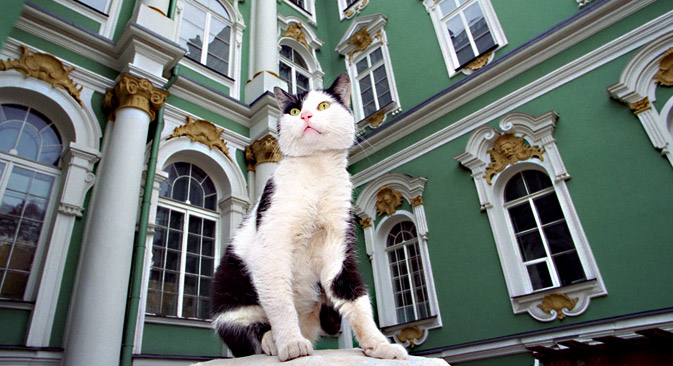First part has been published in #99.
Today, 74 cats, of both (neutered) sexes, roam the underbelly of the museum, and three volunteers spend six hours a day underground, tending to their needs. There are kitchens for preparing their food («they all have different preferences»), and even a small hospital.
The cats are on the Hermitage account, and earn money through donations. Pro Animale, an animal charity, donates €400 a month for food and medicine. They are also sponsored by Royal Canin.
Visitors to St Petersburg can glimpse the Hermitage cats strolling about the museum’s courtyards or sunning themselves on the Neva embankment at the rear of the palace.
A visit to the Hermitage basement to see the cats is a rare privilege. The Hermitage holds only occasional events where the public has the chance to go downstairs to see the spaghetti-like utility pipes that seem to stretch for kilometres. Draped on the pipes are dozens of warm, well-fed felines. In fact, the basement seems to have a cat in every nook and cranny.
With so much pampering, one would wonder if the cats bother to work for their keep? «They don’t need to chase mice any more» says Maria, Assistant to the Museum Director, and PR to the famous felines. «Their presence is a deterrent in itself».
Visiting the Hermitage Museum would be the number one activity on any tourist’s itinerary travelling to Saint Petersburg. Yet, there is something more to the famous depository of art and history. The cats of the Hermitage is one more reason to visit the museum.
By Teresa Levonian Cole (The Telegraph)

